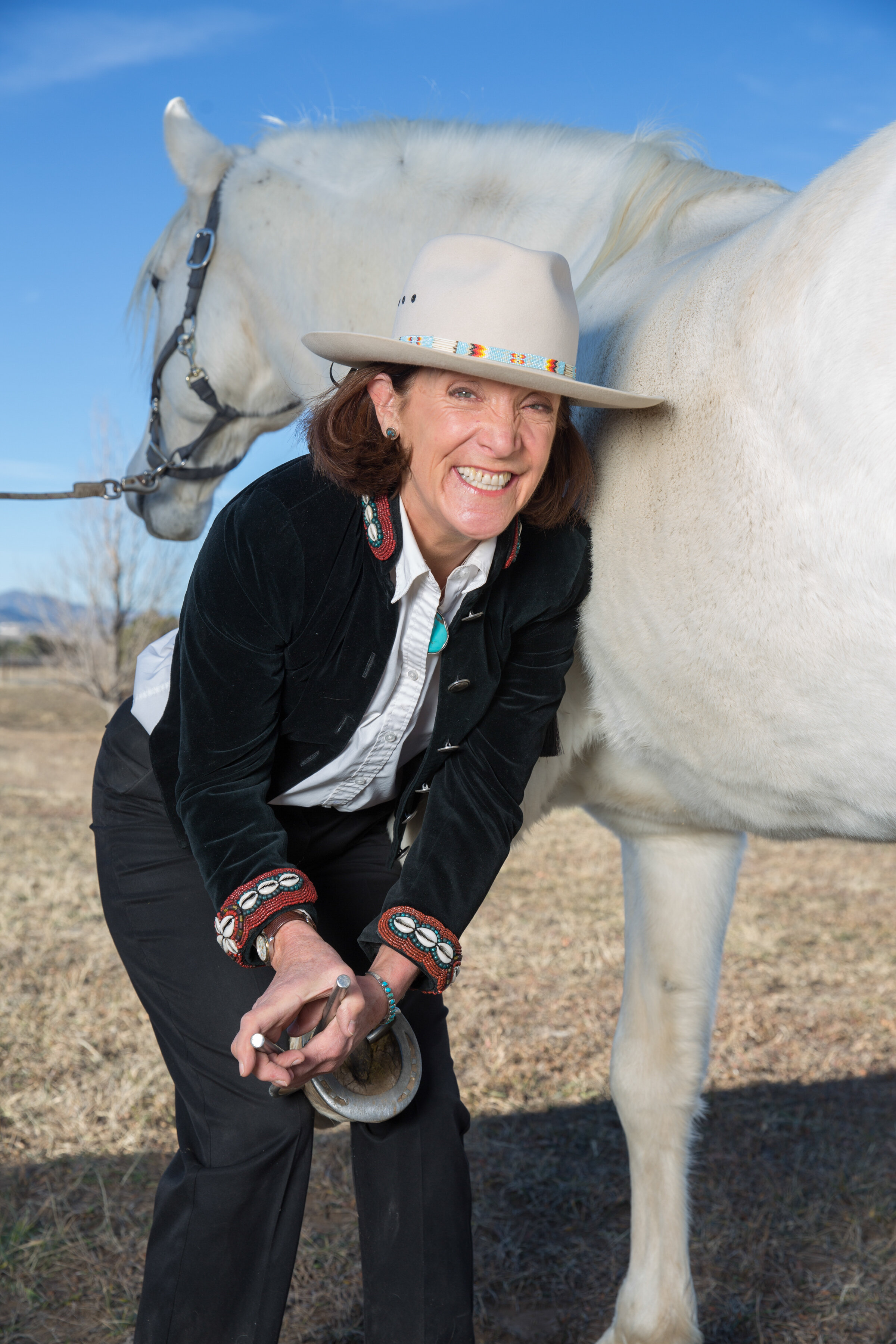
Founder
Barbara T. Page, DVM
The equine foot is my passion. For the first 13 years as a veterinarian (1977-1990) my veterinary career was diverse. Since 1990, my passion has been the foot. Like many passions which arise from great need, I was motivated to attend podiatry seminars because of confusion and disagreements when working with farriers.
Realizing my lack of knowledge of the horse’s foot was one of the causes of these relational challenges, I decided to learn more. After attending several veterinary/farrier conferences, I developed a great passion for the foot. “Diagonal Imbalance of the Foot” was my first publication and was presented at the American Association for Equine Practitioners Conference in 1992. Four publications in scientific journals followed as well as lecturing throughout the US, Canada, and England.
Wanting to “walk a mile in his shoes”, I spent considerable time with farriers and took the certification test to be a farrier given by the American Farriers Association in 1994. This certification was followed in 2005 with the Equine Lameness Prevention Organization. It has been very useful but also very rare for an equine veterinarian to be certified as a farrier, especially with two different groups.
Understanding the need to give back, a non-profit foundation was started in 1994, the Equine Wellness Foundation, through which much of the research on the wild horse foot was financially supported. This Foundation gave way to a more precise purpose and mission, the International Foundation for Equine Podiatry Research. It is my belief that the cases presented to a busy practice like Colorado Equine Clinic can be used for data and publications, with scientific research, to learn, teach, and thus decrease pain and premature dis use in the horse.
The most beneficial way to obtain success in the foot of the horse, in my experience, is when the owner, the horse, the veterinarian, and the farrier meet together. When the owner states their desires for the function of the horse, the farrier states his/her knowledge of how the horse’s feet “stay in control” between trimmings, and the veterinarian uses their education and radiographic/MRI/ultrasound tools, there becomes a goal. Then, all parties observe the movement and hoof capsule shape before treatment, then again after trim and shoe application. We all can see improvement, or not. If not, an adjustment can be made at that time in the shoe, or medication can be administered temporarily.
Most importantly, and the only unbiased information is the horse’s response. Their response of change in gait, stance, body posture is the truth. We all observe and thus see the results of our treatment from the horse’s response. This gives direction and conformation of the treatment applied.
Contact us at 303-791-4747 for more information.
Curriculum Vitae
Barbara T. Page, DVM
Education
Bachelor of Arts, 1973
Skidmore College, Saratoga Springs, NY
Lewis and Clark College, Portland, OR
Doctor of Veterinary Medicine, 1977
Colorado State University School of Veterinary Medicine, Ft Collins, CO
International Veterinary Chiropractic Certification, 2004
Options for Animals Institutes of Animal Chiropractic, Kansas City, KS
Farrier Training
American Farriers Association Certification, 1993
Natural Balance Farriery Certification, 2007, ELPO
International Society for Equine Lameness Pathology, course completion, 2009
Experience
Self employed ambulatory equine practice, Boston, MA,
1977-1979
Associate veterinarian, Littleton Large Animal Clinic,
1979-1988
President and veterinarian, Colorado Equine Clinic,
1988-present
President and Founder International Foundation for Equine Podiatry Research,
1994-present
Publications
Referred Journal Articles
“Breakover of the Hoof and its Effect on Structures and Forces within the Foot”, Page, B. T., Hagen, T. L., 4/8/2007 Journal of Equine Veterinary Science, Vol 22, Number 6, 2002, 258-264.
Referred chapters in books
Caudal Heel Pain, Page, B. T. Current Therapy in Equine Medicine, Fifth Edition, Robinson, N. E. Saunders 2003, Section X, 532-536.
Natural Balance Trimming and Shoeing: Its Theory and Application, Ovnicek, G. D., Page, B. T., Trotter, G. W., in The Veterinary Clinics of North America Equine Practice, Vol. 19, No. 2, August 2003, 353-378.
Papers presented, professional meetings
“Diagonal Imbalance of the Equine Foot: A Cause of Lameness”, Page, B. T., Anderson, G. F. Proceedings of the 38th Annual Convention AAEP, 1992:413-417.
“How to Mark the Foot for Radiography”, Page, B. T., Bowker, R. M., Ovnicek, G., et.al, Proceedings of the 45th Annual Convention AAEP, 1999: 148-150.
“Raising a Family and the Practice of Veterinary Medicine,” Page-Bullock, B. T., Proceedings of the 48th Annual Convention AAEP, 2002, 477-478.
Non-referred Journal Articles
Western Horseman
Equus

